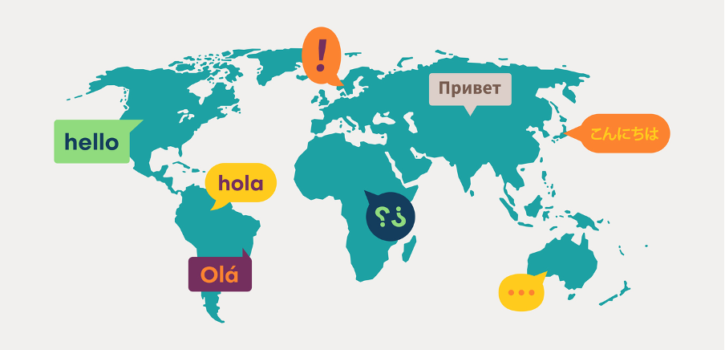How to translate product descriptions [complete guide]
For your product descriptions to be as attractive as possible, you need to make sure the original version is perfect. Once this is done, you can make them attractive in other languages too. It’s also important to think about SEO and make sure the source product descriptions and target product descriptions are optimised. In this post, we’ll explain how to translate your product descriptions, step by step.
1. Try some transcreation
Transcreation and translation are two different things. Transcreation is a neologism that combines “translation” and “creation”. This marketing technique aims to generate the same emotional reaction as the source text.
The iterative process involves finding equivalence whenever local expressions are used or pop culture is referenced. It takes account of the text’s style and content to make sure cultural elements meet the target audience’s expectations.
2. Maintain product description structure for an effective translation
To keep things understandable, your product descriptions’ structure should be preserved.
This means the source and target should have the same format.
To achieve this, you could include the following elements (in the right places):
- Titles and subtitles
- Bullet points
- Line breaks
- Bold formatting
- Key information at the start of the text.
Premium-quality product information should also include various essential details like:
- Images (from all angles)
- Product features (ingredients, colours, size, materials, etc.)
- How to use
- Product benefits vs competitor products
- Other potentially important information (e.g., compatible accessories).
3. Adjust product description length to the target country
You should adjust your product description length to suit the country you’re targeting. While the Chinese value long argument-based descriptions, the Germans prefer concise texts that are straight to the point.
Generally speaking, product descriptions should be fleshed out to include as many relevant keywords for each country as possible. These important terms will improve the SEO performance of your e-commerce site.
4. Insert keywords as naturally as you can
To translate your product descriptions effectively, you need to insert keywords as naturally as possible.
Just a few years ago, it was normal to add keywords here, there and everywhere. The more of them you could stuff into your text, the better your chances of performing effectively online.
But now, Google’s rules have changed a little:
The meaning of a phrase is more important than the words it contains. So, our advice is to create informative product descriptions that are easy to understand and relevant to users’ search intent.
Feel free to play with phrase lengths and add synonyms and related information. Product descriptions should provide real added value to users and answer all their potential questions.
5. Convert prices and units of weight and measurement
If you have a branch abroad, you want its prices to be in that country’s currency. And the same is true online! For users to relate to your products, they need to be able to understand the price.
To translate prices and units of weight and measurement for a country:
- Use an online converter;
- Refer to tables showing units of weight or measurement for the target country;
- Have a TextMaster professional translator produce precise multilingual content for you.
Warning ⚠️
Do the photos on your product descriptions show sizing (height and width)? These also need to be translated and replaced in the photos.
6. Provide product images with text in the target language
Speaking of images, they are a must for a successful product description. According to an Owl Marketing study, lower quality photos generate 60% fewer sales. So, we suggest you take clear photos that put the product in context wherever possible.
To translate your product descriptions properly, you should also take photos of a product after its description is translated. Of course, this doesn’t apply to clothing or other text-free items.
For example, if you’re selling a book and have the front and back covers translated, you’ll need to take photos of the translated version to go with the translated product description. This tip also applies to other products with text: greetings cards, video games cases, magazines, etc.
7. Read, re-read and re-read again
As the saying goes, there is strength in unity. If you want your product descriptions to meet the expectations and suit the culture of foreign buyers, the translation should be checked at least once by an experienced proofreader. They can make sure the translation is correct and fine-tune the style too. TextMaster’s proofreaders and reviewers are here to help.
Translating your product descriptions: a recap
To summarise, you need to:
✅ Transcreate your product descriptions.
✅ Maintain a product description’s structure.
✅ Adjust a product description’s length to the target audience’s expectations.
✅ Insert keywords without going over the top.
✅ Convert prices and units of weight and measurement.
✅ Make sure text in photos is in the target language.
✅ Have your content proofread.
Ideally, the final stage in your product description translation process will be a meticulous check by a native proofreader. At TextMaster, we will make sure all your product descriptions follow this advice! They’re re-read twice: once by the professional translator and again by a qualified proofreader.
Our team would be happy to translate your product descriptions into the languages of your choice.





